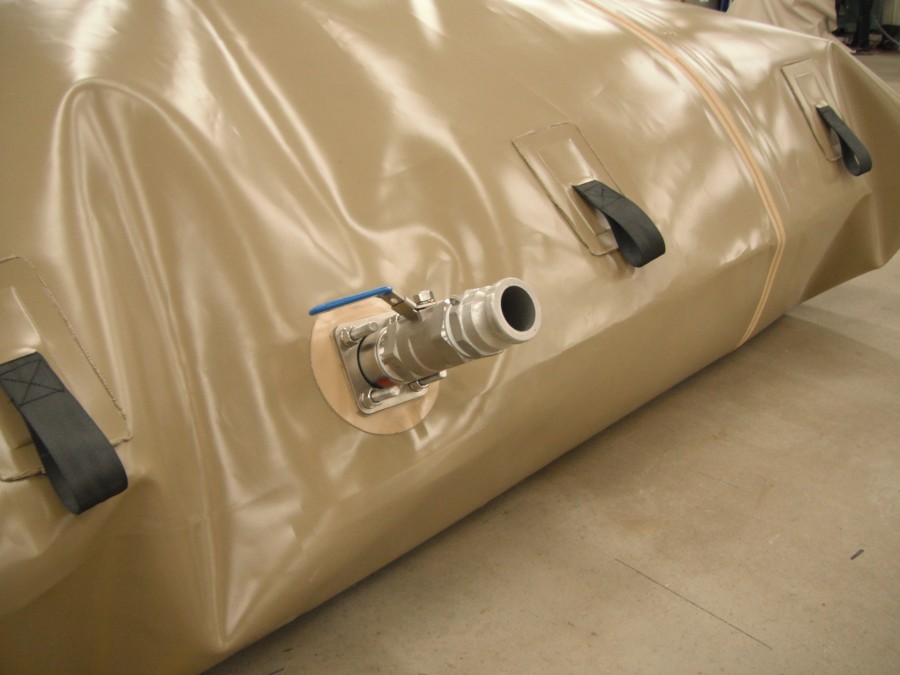
Crown Flexitanks
The flexitanks commonly used by the industry can hold up to 24,000 liters of liquid cargo. Flexitanks are used for the transportation of non-hazardous liquids.
Uses for a Flexitank
Due to its high efficiency and exceptional contamination prevention, flexitanks are used for non-hazardous chemical transportation. But also for food-grade goods like edible oil, fruit concentrates, drinks, among others.

1. Fuel storage
Liquid fuels including gasoline, diesel, and oil can be stored and transported in flexitanks easily. they are primarily utilized for storage. Coupled with a protective lining and berm, to provide extra containment safety to the surrounding environment.
2. Portable water storage
Flexitanks occupy very little space and are easy to transport. In case of emergencies or during disaster reliefs, they are also used to store and transport potable water
3. Food-grade liquid storage
Flexitanks enable the safe storage of food-grade liquid ingredients, such as milk, juices, wines, fructose syrup and others.
4. Industrial chemical storage
flexitanks are ideal for transporting and storing industrial liquid chemicals such as liquid detergents, lubricants, fertilizers, liquid latex, and paints, among others.
5. Single-use & primary storage
Flexitanks can decrease the overall storage costes in cases where liquid storage is not for a long duration.

Food-grade liquids

Chemicals

Water

Oil
What can you carry in a Flexitank

Images used are for representative purpose only.
Advantages
Flexitank containers have an increasingly growing demand as they are economically viable for bulk traders for transporting non-hazardous liquid cargo. They also offer better protection against liquid cargo contamination.
Effectively, flexitanks have made transportation more efficient, cost-effective, and also have a lesser environmental impact. They are becoming a preferred replacement for the traditionally used drums and ISO containers.
1. Cost - Effective Option
Flexitanks are less expensive than drums, IBCs, and ISO tank containers. The cost of using flexitanks is 33% less than what is needed to spend when transporting bulk liquid using traditional bulk liquid containers
2. More Capacity
Flexitank containers can carry 15% more payload than what is carried by IBCs. 44% more than drums. And 50% more than bottles. So, they offer more capacity while being an economically viable option for shippers.
3. Preserves Product Quality
Flexitanks keep the quality of liquid carefully intact. They are composed of several layers of polyethylene, each fitted with a pump and a valve. Making it airproof, waterproof, and weatherproof. They are mostly designed for single-use which contributes to reducing the risk of contamination considerably
4. Faster Loading & Unloading
Flexitank storage containers do not require a forklift to load or unload. This makes the entire loading and unloading process faster by up to 90%. It also makes Flexitanks a cheaper option as compared to the cost of using drums. As well as IBCs with a reduced product loss during the process
5. Requires Less(er) Labor
As flexitanks are convenient to handle, load, and unload, the involvement of the labor is comparatively lesser. This makes the logistics revenue considerably lower.
Recommended Flexitank Capacity by Liquid Type
The most widely available flexitank containers come between 10,000 liters and 24,000 liters. Flexitank models are available in 16,000L, 18,000L, 20,000L, 22,000L, and 24,000L.Some companies also offer a range of 1,000L up to 100,000L — depending on the customer’s requirements
Here’s a reference table for various types of liquids and corresponding flexitank capacity:
| Type of product | Density (kg/m) | Recommended size |
|---|---|---|
| Latex | 60 - 95 | 19,000 L |
| Polyol | 1,100 | 19,000 L |
| Glycerin | 1,260 | 20,000 L |
| Palm oil | 887.5 | 21,000 L |
| Olive oil | 905 | 22,000 L |
| Wine | 285.7 | 24,000 L |
General Misconception For Choosing Flexitank Capacity
Myth: A flexitank with a greater capacity as compared to the total quantity of load would be a better choice for the bulk load of Liquid
Fact: It is the density/specific gravity of the liquid which plays a crucial role in determining the correct size of flexitank to be used.

Images used are for representative purpose only.
What Is A Flexitank Made Up Of?
Multilayer polyethylene
Single and double layer polyethylene
Barrier tanks
PVC
Bottom discharge
Get a Flexitank That First Your Needs on xChange
So, now you’ve had a chance to learn more about Flexitank. Maybe it’s for you – or maybe you’re looking for other tank containers?Regardless of where you’re at, finding your next container has never been easier.
How do you use flexitanks?
So, now you’ve had a chance to learn more about Flexitank. Maybe it’s for you – or maybe you’re looking for other tank containers? Regardless of where you’re at, finding your next container has never been easier.
How do you unload a flexitank?
The front end of the flexitank is lifted and rolled slowly towards the door so that the liquid residue can flow easily towards the product valve. The process is continued until the liquid inside the flexitank is pumped off completely.
Are flexitanks reusable?
While most flexitanks are made for temporary, one-time use, others can contain a liquid for years at a time, or be reused as well.
How many liters of liquid can a flexitank hold?
Depending on the density of the liquid, these flexitanks are available with capacities ranging from 10,000 to 24,000 liters. Some companies also offer a range of 1,000L up to 100,000L.
How much does a flexitank cost?
Flexitanks are very cost-efficient. The cost of the flexitank depends on what type of Flexi bag is purchased. The price of a flexitank container set ranges from 100 USD/set up to 500 USD/set.
What liquids can be transported in a Flexitank?
Drinking water, fruit juices and concentrates, wine, sweeterners, malt extracts, olive oils, all type of edible oils, paints, chemicals, bio diesel … liquid detergents, lubricants, inks, and a lot of other free flowing liquid items.
